Germany’s Regionaliga seven years later
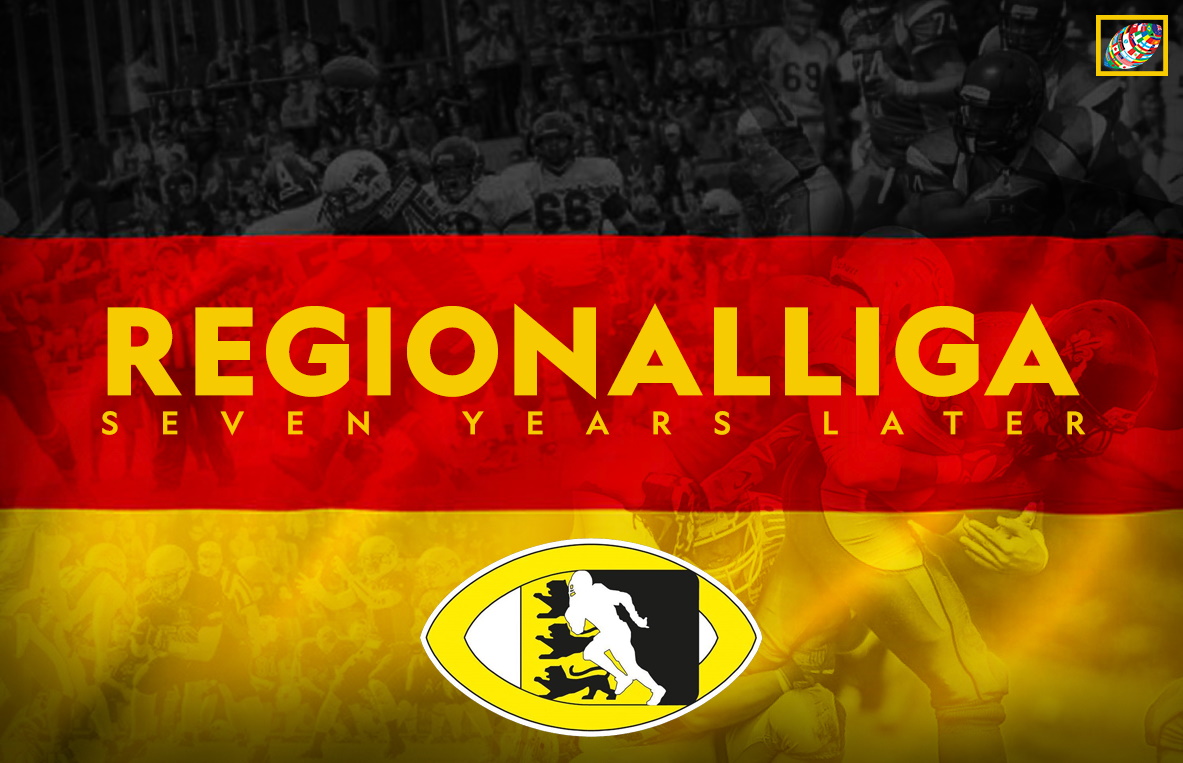
Germany has the deepest and most competitive American football league system in Europe. Over 250 teams currently compete on eight different levels. With relegation and promotions, teams can rise or fall quickly, eventually finding the right spot.
This site mostly focuses on nations’ top leagues, but I think the true progress of football in Europe is better measured by the middle and lower leagues, places where local players have a bigger piece of the action.
In top leagues around Europe, American import players sometimes have an outsized role. A great quarterback/receiver combination from the States can make a huge difference, even to the point of propping up substandard teams. Poor football teams with money can sometimes achieve success simply by paying outstanding imports to overwhelm the local competition. These teams are often derisively referred to as “bought teams.”
In Germany, this American influence has extended from the German Football League down through the third league, the Regionaliga.
My first experience in the Regionaliga was in 2015, coaching the Ravensburg Razorbacks. That season, six of nine teams in our division relied on imports. The few who didn’t, were hugely disadvantaged. As a result, the league was tremendously lopsided. The teams fell into three categories; the top three teams (with imports and good German locals), the middle three (less talented imports/or poor German locals), the bottom three (no imports).
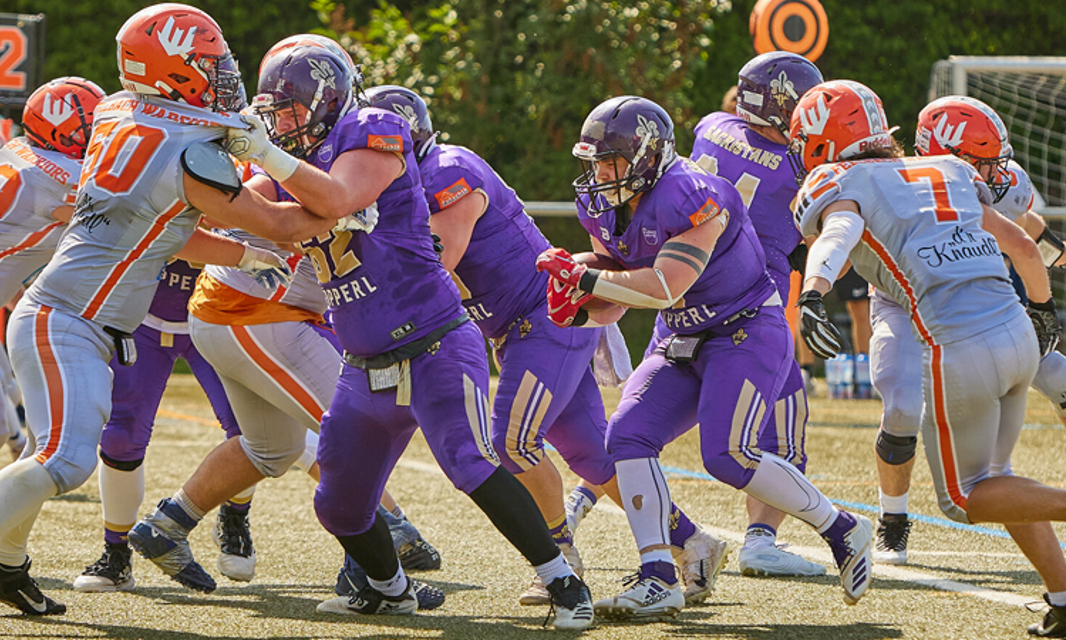
Freiburg Sacristans RB looking for daylight against the Fellbach Warriors Photo: Fellbach Warriors
It was a wonderful season for the Razorbacks. We went 10-0, earning a promotion to the GFL2 for 2016. As a top team, we had three outstanding American players. We had very good Germans as well, but there’s no denying the imports were a huge part of our success.
The bottom teams were not competitive at all. Games between the top and bottom teams were especially one-sided. The top three finishers were 9-0 against the bottom three winning by an average score of 42-6.
This season, I returned to the Regionaliga to coach one of 2015s “bottom” teams, the Freiburg Sacristans. The Sacristan management were clear that they wouldn’t bring import players. The goal was to build a winning system using homegrown talent. I respected that philosophy and was excited for the challenge. I also thought that my 2015 experience would prepare me for the competition in the Regionaliga.
But the Regionaliga had changed.
The easy wins were gone, but so were the unbeatable teams. Every week was a battle that felt like it could go either way. Games were rarely decided until the fourth quarter. One mistake was often the difference between victory and defeat. More than half the games in our league were decided by two touchdowns or less. The champion, the Pforzheim Wilddogs, went undefeated, but the margins were nothing like 2015. The 2nd and 3rd place teams lost three games to teams in the bottom half of our standings.
The Sacristans finished the season 5-5, winning the final four games, after a 1-5 start. We were incredibly balanced with our competition. Gameday coaching was always intense as we never had much room for error. Except for a blowout loss to Phorzheim, our point differential over nine games was just 12 points.
All this to say, it was the most stressful, challenging, frustrating and rewarding .500 season I’ve been a part of. At 1-5, I wondered if anything I was doing made a difference, at 5-5, I was excited for the future.
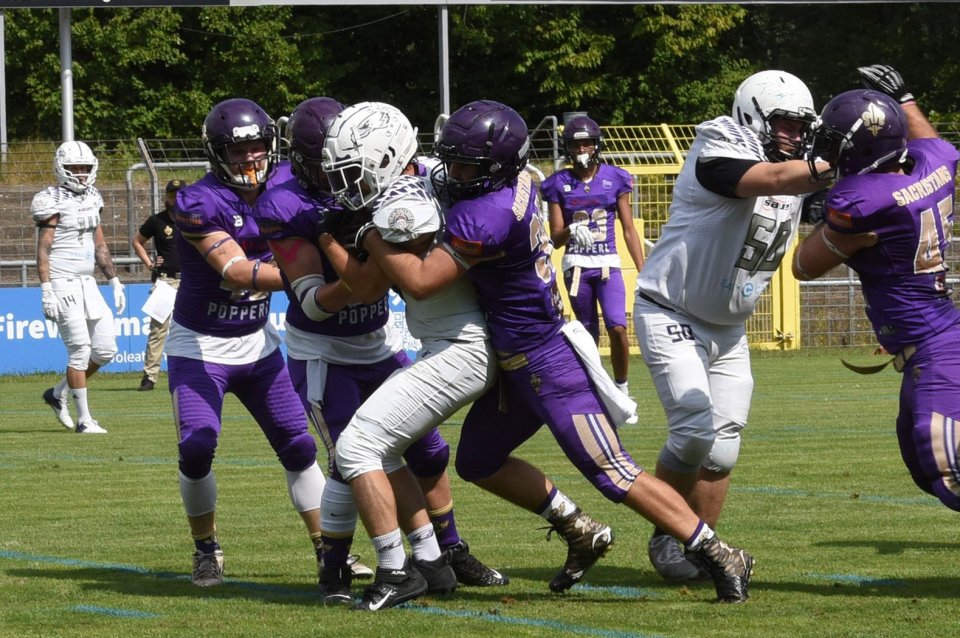
SSV Reutlingen 05 Eagles RB being brought down by Freiburg Sacristans Photo: Silvia Schiweck
What changed?
The differences between the Regionaliga 2015 and 2022 were impressive. Besides becoming more competitively balanced, the quality of play was simply better. What caused this huge improvement over seven years? I have three theories.
- Coaching – The first pleasant surprise when I got to Freiburg was learning of the dedication and knowledge of the coaches on my staff. I inherited guys who knew football and understood how to teach
That I had a good staff probably made me overconfident going into the season. I’d soon find out that there are a lot of good coaches in the Regionaliga. The quality of local coaching in the Regionaliga has improved dramatically. German coaching has simply gotten better. The German coaches seem to stick around, and seven years of extra experience means a lot.
Every week, watching scout film of our opponents, I saw teams that ran sound schemes and players who knew their roles. Offenses were well balanced, with most teams having strong ground and passing games. On gameday, we faced squads with clear gameplans to take away our strengths and best use their personnel.
This wasn’t the case in 2015. Then, the American quarterback often doubled as the offensive coordinator, designing and calling his own plays. Line play was especially bad. The offensive line was often uncoached, making the run game a sloppy mess.
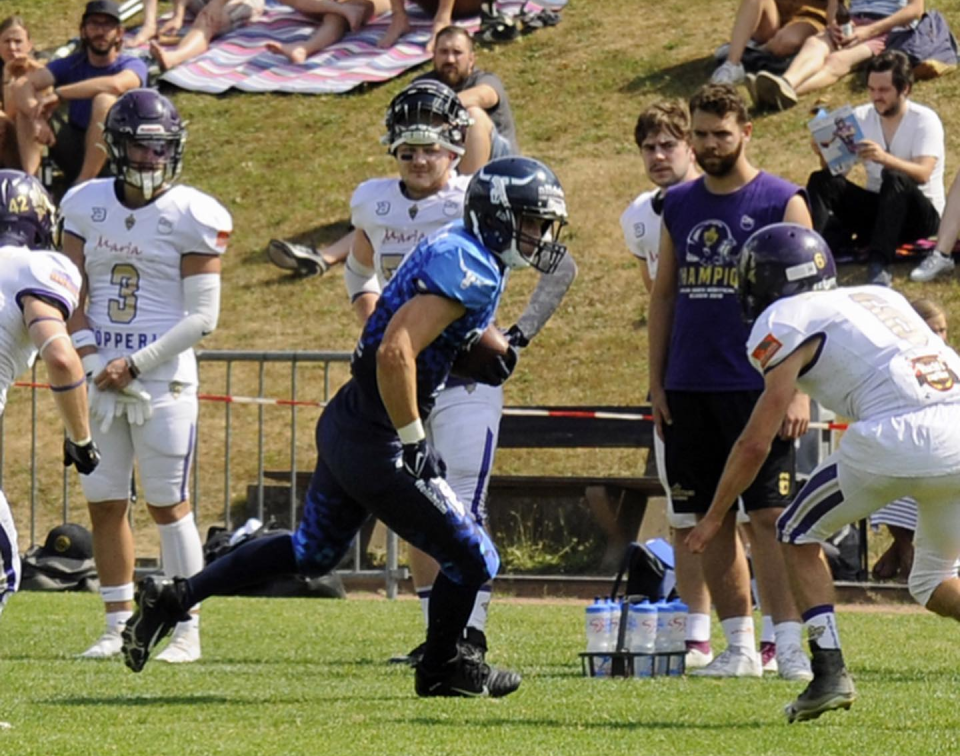
Weinheim Longhorns RB evading a Freiburg Sacristans defender
Most teams had rudimentary offenses, overly reliant on an American quarterback locking in on his American receiver. Defenses rarely adjusted but stayed in their base looks even when weaknesses were exploited.
- Players – When coaching improves, the players get better as well. In 2015, I could always find a weak link to attack on defense, defensive backs blew coverages, front players stood up and didn’t stay in their gaps, linebackers didn’t seem to react to simple keys. This was much tougher in 2022. Some were better than others, but fundamental skills were usually there. Every team was dangerous, everyone had multiple offensive threats.
- American Imports – Fewer teams in the Regionaliga are bringing imports. In 2015, six of nine teams relied on American QBs. In 2022, we had three. Even more significant, the imports falling to the Regionaliga are not the playmakers that I saw in 2015. The gap between German and American in the Regionaliga has tightened.
Two reasons for this; the Germans are better, and the imports aren’t as good.
With the new ELF taking the best foreign talent, the GFL and GFL2 are getting the next best players, not leaving as much for the Regionaliga.
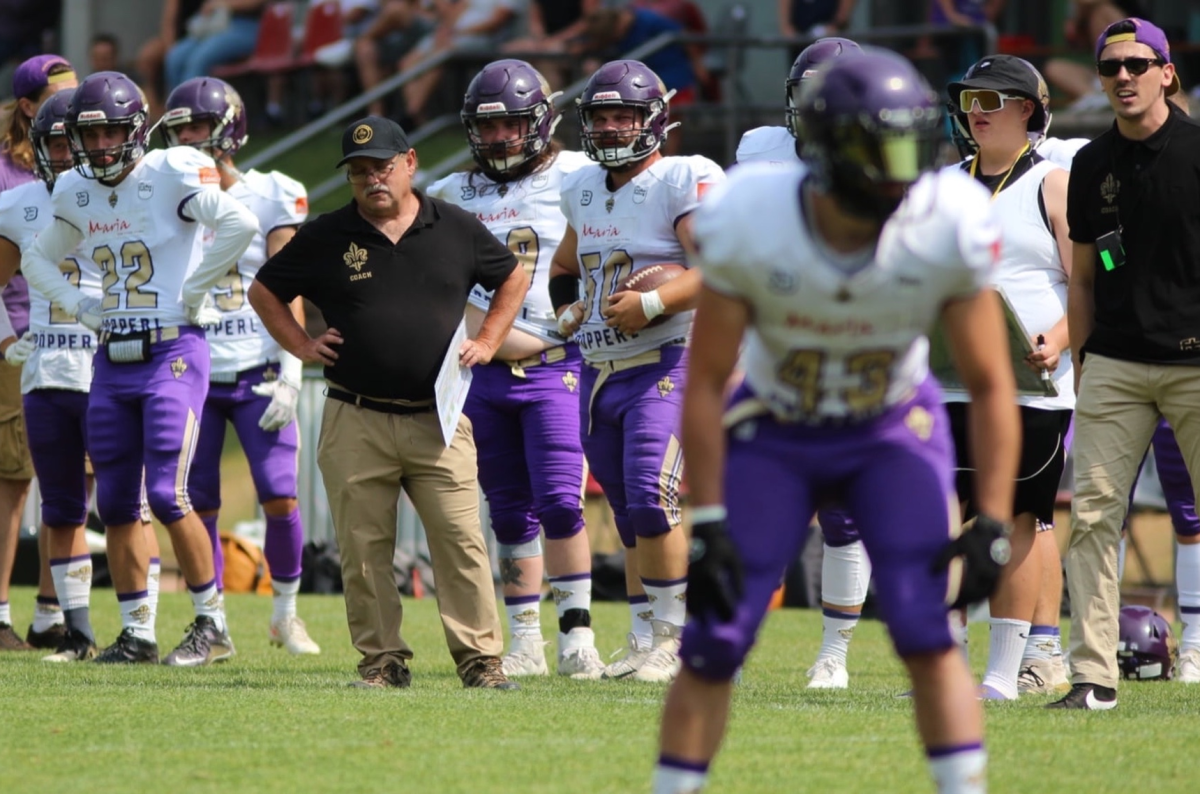
Freiburg Sacristans HC Gray Levy surveying the field
The surprising part was that this actually improved the gameplay, the German players and the coaching.
Coaches on most teams don’t have the crutch of leaning on an American quarterback to install and run the offense and have risen to the challenge. Teams must learn to run the ball, as well as pass, when facing better defenses. German players have the opportunity to play quarterback…and eventually become coaches themselves, passing on their knowledge to the next generation.
As someone who came to Europe, in part, to grow our game overseas, seeing the improvement in the quality of football is encouraging and rewarding.
“Bought” teams are still a part of the German football landscape and as long as the top team in a league goes undefeated, perfect competitive balance isn’t there. But, the 2022 Regionaliga was the “fairest” league I’ve been a part of in Europe. When we won, we generally deserved to win, having made fewer mistakes than our opponent. When we lost, we deserved that as well.
That’s all a coach can ask for.